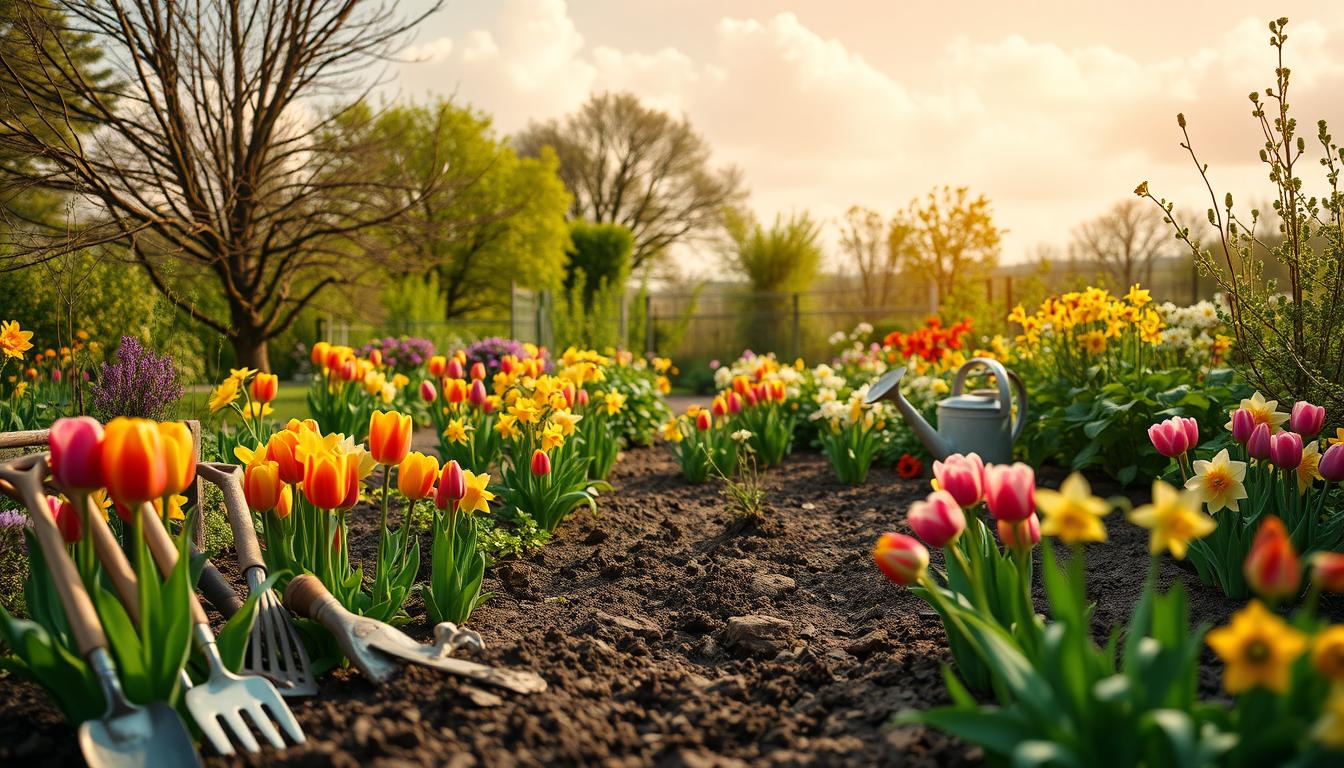Time to get the garden ready for spring! Let’s look at some spring garden preparations that will make our garden spring clean-up smooth and easy. Making sure you have the right tools for Spring Garden maintenance will help get your garden ready for the new season. Having the right tools is a must.
Preparing your garden for spring can seem overwhelming. But with the right tools, it’s easy. I always focus on the basics when it comes to garden must haves.
First, get your shed in order and restock your supplies. You’ll need tools like trowels, cultivators, and rakes for soil prep. For pruning and upkeep, you’ll need pruning shears, loppers, and hedge clippers. A shed or garden cart helps keep tools organized and easy to find.
Here are some essential tools to consider:
- Hand trowel for planting and weeding
- Cultivator for loosening soil
- Rake for leveling and smoothing out soil
- Pruning shears for trimming and pruning plants
- Loppers for cutting thicker branches
- Hedge clippers for shaping hedges and shrubs
Investing in these tools makes gardening much easier. Always sharpen your blades and oil your hinges to keep tools working well. With the right tools and planning, your garden will thrive.
Soil Prep
Here is something gardeners don’t talk about enough. Testing your garden soil. Starting by testing your garden soil every 3-5 years is like going for your annual checkup. Best results are to send soil samples into a lab for testing. The at home kits are good also. Knowing the ph. of your soil helps know what nutrients it needs. This is like a grantee you will have a successful growing season. Most plants like a pH between 6.0 and 7.0. I’ll also make sure the soil is good for plants by adding organic matter.
Temperature zones
This info helps me pick the right plants for my garden. It ensures they’ll survive in my garden’s special temperature zones.
The USDA Hardiness Zones are based on the lowest winter temperatures. Each zone is 10°F apart. But these zones might not fully show my garden’s climate. Microclimates and other things can change the temperature.
To really get to know my garden’s zones, I use the Gardenate planting calculator. You can find your climate zone and it gives me planting tips based on my zone and the month.
Soil prep is so important, thinking about my garden’s zones. Your Soil should be 12 to 14 inches deep for the best growth. This depth helps plants do well in their zones.
By knowing my garden’s zones and prepping the soil right, I create a perfect spot for my plants. They can grow and bloom beautifully.
Some important things to think about when understanding my garden’s zones include:
- Average minimum temperature
- Microclimates and other factors that can affect temperature
- USDA Hardiness Zones and their corresponding temperature ranges
- Soil preparation and its impact on plant growth
By considering these, I can choose the best plants and care for them well. This makes my garden beautiful and easy to maintain.
Time to Get the Garden Ready – Spring is Almost Here!
I love getting ready for the new gardening season. Starting my spring gardening tasks is very exciting. When you’re getting your garden ready for spring it’s like getting ready for the first day of school. New supplies, new ideas and new possibilites. Making a spring garden checklist helps me not forget anything important.
First, I clean out the garden from winter stuff. This means getting rid of dead leaves and branches. Then, I check the soil’s pH and nutrients. I add what’s needed to make it good for my plants.
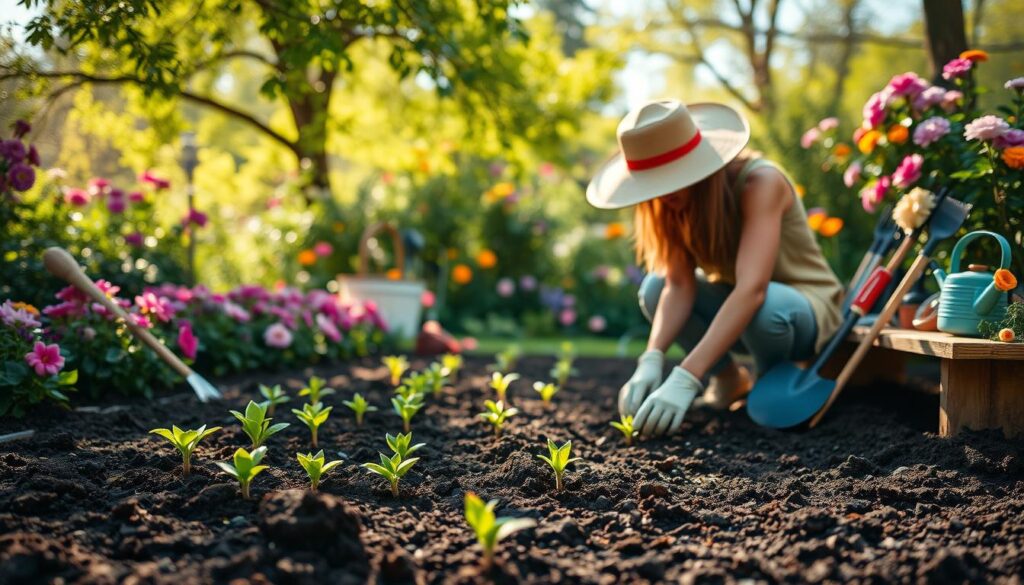
Pruning dead parts is also important. I prune plants like buddleia and hydrangea in late winter. This keeps them healthy and looking good for the season.
Key Spring Gardening Tasks
- Clearing winter debris
- Soil testing and amendment
- Pruning dead growth
Who doesn’t love a list. The gratification that comes with checking stuff of your list is euphoric. Having a spring garden checklist keeps me organized and helps make sure my garden is ready for spring. Whether you’re new or experienced, don’t forget these spring gardening tasks. They help you have a great gardening season.
Smart Planning for Spring Planting Success
When getting your garden ready for spring I plan out what plants I will be growing. I pick the best time to plant and choose plants that fit my area’s weather. Experts say early March is great for getting your garden ready. Making a shopping list (yup another list) can help save money and make plants grow better.
Knowing when to start planting is key. For example, start tomato and pepper seedlings indoors in late March. This way, they’re ready for planting in late May. Spinach, carrots, and beets can go straight into the ground in early April. Be sure to know which vegetable or plants will grow well together. Not all plants get along. Check out the Farmer’s Almanac website to find compatible planting ideas. Remember, trees and shrubs grow wider as they get taller. Using crop rotation and mulch will keep my garden healthy. Do your research.
Here are some tips for a great spring garden planning:
- Use 2- to 3-inch organic mulch to save water and keep soil warm
- Add sulfur or compost to fix desert soil problems like too alkaline pH and poor drainage
- Water in the morning to cut down on evaporation
- Check your irrigation system often for broken parts or damaged lines
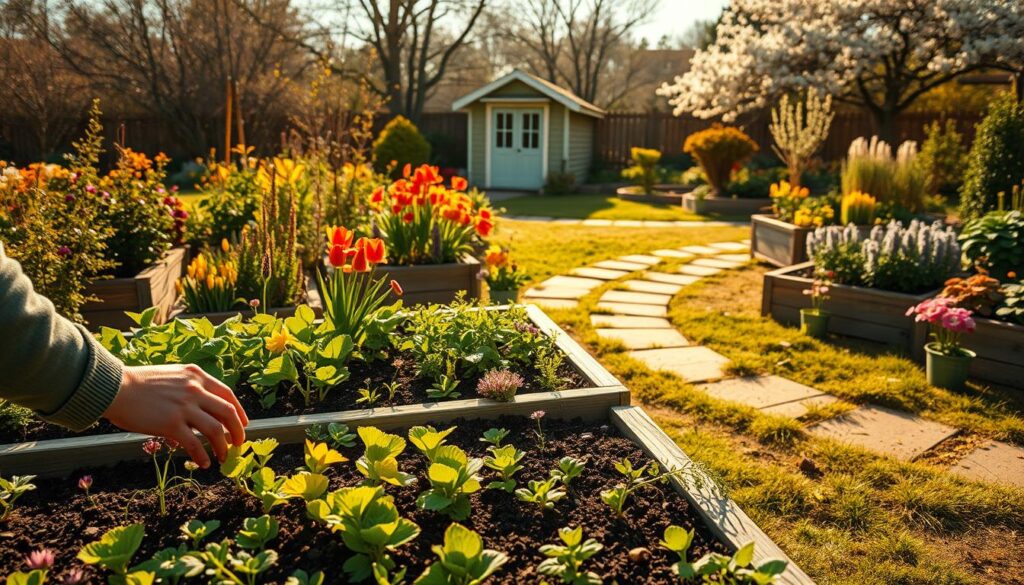
By using these tips and thinking about what my garden needs, I can make a plan for a successful garden. Always check soil temperature. It’s best to do this the same time every day to get accurate readings. This will help you know if your soil is warm enough for your seeds to germinate. With good spring garden planning and planting, I’ll have a garden full of life and plenty to harvest all season.
Preparing Garden Beds and Borders
When I start my spring garden, I know I must prepare my beds and borders well. This means cleaning up, loosening the soil, and adding compost and mulch. These steps are key for a great season.
I start by loosening the soil to 12 to 14 inches deep. This helps remove compacted soil and improves drainage and air. Then, I add compost to make the soil richer and better.
Some important steps for spring garden prep are:
- Soil testing to check pH and nutrients
- Adding fertilizer and soil amendments as needed
- Pruning plants that bloom on new wood during late winter/early spring
- Dividing perennials to prevent overcrowding
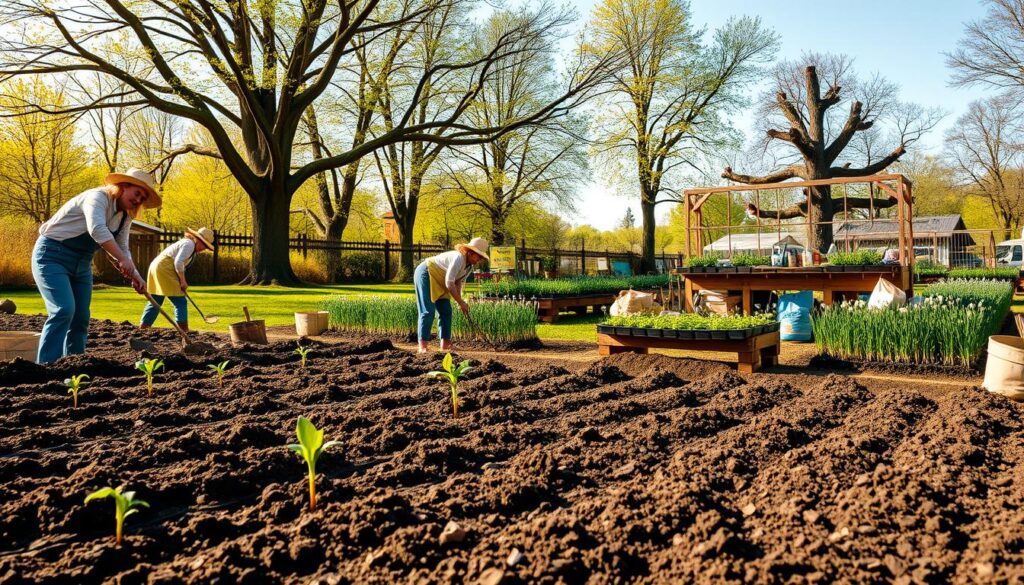
By using mulch and compost, my garden will thrive. Regular clean-up and soil prep are vital. With these steps, I’ll have a garden that’s easy to care for and full of harvests.
Sustainable Garden Practices for Spring
while getting my garden ready for spring, I’m using sustainable practices to help it grow well and be kind to the planet. I’m also adding compost and special soil helpers to make the soil rich. This way, my plants can grow strong without needing harmful chemicals.
Choosing the right plants is important. I like to pick ones that don’t get sick easily and need little care. Native plants are great because they use less water and need less help. You might want to check your community for info on native plants for your area. My local library hosts a workshop every year on native plants for our area and how to care for them. I also try to add good bugs like ladybugs to keep bad bugs away without using chemicals.
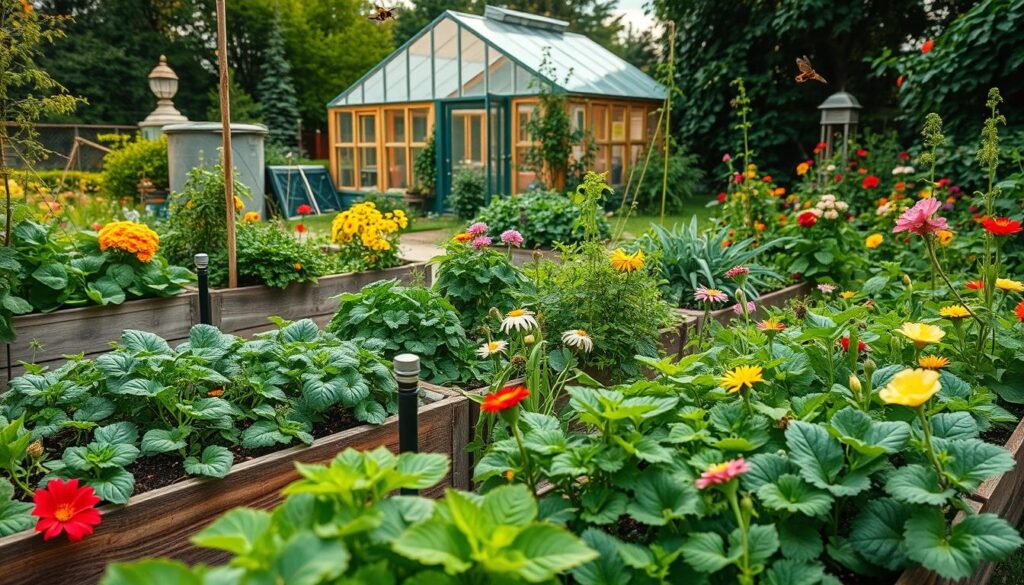
I’m also recycling and using old plastic bottles for seeds and water. I have bird feeders to help control pests. These steps make my garden beautiful and good for the planet.
Some big pluses of these practices are:
- Less water used
- Less waste
- Soil gets better
- More life in the garden
By doing these things, my garden will be healthy and help the environment. It’s a win-win for me and the planet.
Your Garden’s Journey Through the Growing Season Ahead
Spring garden planning is here, and I’m psyched! My list is already started and I’m feeling like a kid at Christmas. I’ll be dusting off my garden tools, preparing the soil, picking the best plants, working on the layout and dreaming of the beautiful garden that grows well and gives me lots of food. When it comes to your garden you get what you give. The work seems like a lot, but it is so rewarding. I hope you are as excited as I am and would love to hear any tips you would like to share. I hope you get out and start growing. Happy gardening!

